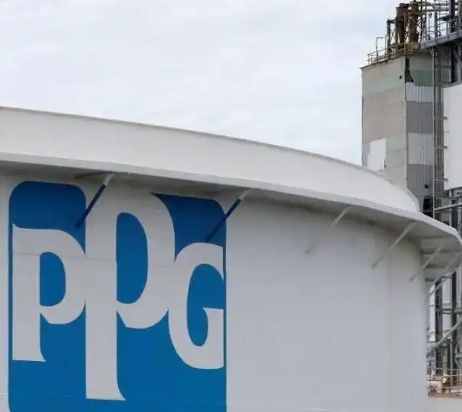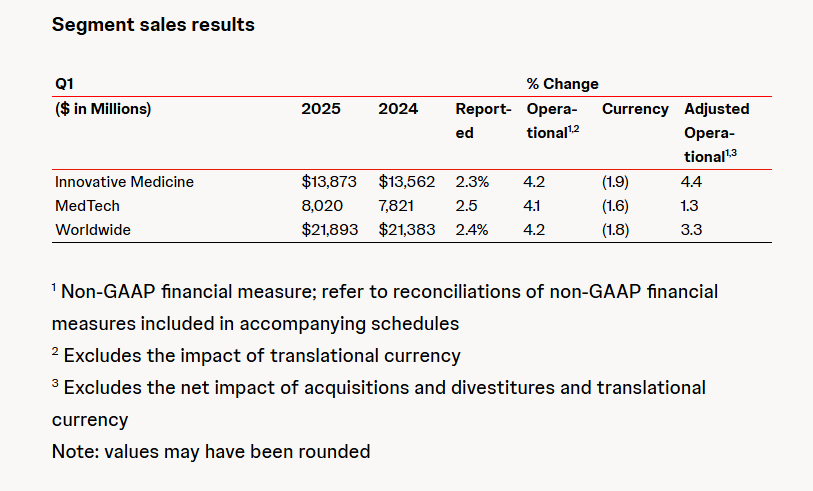Auto Industry Undergoing Major Restructuring! Multiple Ministries Issue Statements: Strategic Restructuring of Central State-owned Vehicle Manufacturers to Drive New Demand for Plastics!
Heavyweight industry conference convenes! Multiple ministries issue statements on the development of the automotive industry.
The State-owned Assets Supervision and Administration Commission of the State Council will conduct strategic restructuring of central enterprises in the automotive sector.
According to CCTV News,On March 29, a relevant official from the State-owned Assets Supervision and Administration Commission (SASAC) of the State Council stated at the China Electric Vehicle 100 Forum that the next step will be to carry out strategic reorganizations of the major automotive companies to increase industrial concentration.
The State-owned Assets Supervision and Administration Commission of the State Council (SASAC) stated that the goal of strategic reorganization is to centralize the advantages of R&D, manufacturing, and market resources of central enterprises to create a world-class automotive group with global competitiveness, independent core technologies, and leadership in the intelligent connected vehicle revolution. Additionally, it will encourage central enterprises to increase other forms of cooperation.
Gou Ping, deputy director of the State-owned Assets Supervision and Administration Commission of the State Council, said that he encouraged and supported automotive central enterprises to deepen cooperation with other enterprises in various forms, and accelerate the improvement of core competitiveness and market share. Efforts should be made to promote the integration of automotive central enterprises into the global innovation network in a coordinated way, accurately grasp the overseas market demand, and carry out overseas layout in an orderly manner.
At the same time, the State-owned Assets Supervision and Administration Commission of the State Council has also launched the implementation of the central enterprises' industrial renewal, and the action plan for the layout and development of new energy vehicles, focusing on complete vehicle products as the breakthrough point and core carrier, and strengthening the layout of power batteries, automotive chips, intelligent driving systems, etc.
Gou Ping said that in terms of investment layout, the direct investment in new energy vehicles by the three major state-owned automobile enterprises in 2024 is expected to grow by 35% year-on-year. The proportion of investment in the total amount exceeds 70%, and the key resources of the "three electrics" have been independently controlled and produced close to the market. The sales of independent brands reached 1.75 million units, a year-on-year increase of over 80%.
Public information shows that the three central automotive enterprises are China FAW Group Corporation (referred to as "FAW Group"), Dongfeng Motor Corporation (referred to as "Dongfeng Motor"), and Chongqing Changan Automobile Co., Ltd., which is under the China South Industries Group Corporation (referred to as "Changan Automobile").
In February this year, Dongfeng Motor and Changan Automobile announced that the two major central enterprises might undergo a reorganization.
National Development and Reform Commission: Focus on rectifying market chaos
In addition, at the 2025 China Electric Vehicle Hundred People's Conference, Zheng Bei, a member of the Party Leadership Group and Deputy Director of the National Development and Reform Commission, stated thatCurrently, the issue of disorderly competition in China's automotive industry is quite prominent. Some enterprises are willing to sacrifice profits to seize the market, and phenomena such as false advertising and malicious defamation occur from time to time. This not only leads to a decline in industry profits in the short term but will also affect technological innovation and product quality and safety in the long term, weakening the competitiveness of the industry. We will work with relevant departments to implement systematic measures.
First, focus on rectifying market chaos, standardizing competition order, maintaining fair competition, strengthening price monitoring in the auto market, industry self-discipline, and public opinion guidance, and promptly reporting typical cases of unfair competition.
Secondly, strictly regulate the market, strictly investigate and deal with products that do not meet technical standards and quality safety requirements, and firmly hold the bottom line of quality safety.
The third is to standardize investment promotion, in accordance with the requirements of accelerating the construction of a unified national market, to break down local protectionism and market barriers, and to regulate local investment behaviors. It is hoped that key enterprises will adopt a long-term perspective, strengthen their sense of responsibility, focus on improving quality, optimizing services, and creating brands, place greater emphasis on safeguarding consumer interests, and take the lead in setting an example.
MIIT: Comprehensive Rectification of "Intrinsic" Competition in the Auto Industry
On March 29, Xin Guobin, vice minister of the Ministry of Industry and Information Technology, said at the 2025 China Electric Vehicle 100 Forum that the Ministry of Industry and Information Technology will ensure that:
First, further strengthen technical research and breakthroughs.
The second is to accelerate the industrialization development of autonomous driving.
Third, actively stabilize and expand automobile consumption.Formulate a new round of work plans to stabilize growth in the automotive industry, effectively implement policies for vehicle trade-ins, the renewal of new energy city buses and power batteries, continue to carry out new energy vehicle promotion activities in rural areas, and pilot programs to address shortcomings in charging and battery swap facilities in counties.
Fourth, promote the digital transformation of the entire industrial chain. Promote the application of artificial intelligence in scenarios such as automobile R&D design, production manufacturing, and business management, and carry out the research and promotion of evaluation standards for digital transformation service providers in the automotive industry.
Further deepen the reform of industry management.Comprehensively rectify "involutionary" competition, carry out special law enforcement actions against unfair competition on the Internet, and create a good market environment.
Ministry of Commerce: Unleash the Potential of Existing Consumer Demand
A relevant official from the Ministry of Commerce expressed at the 2025 China Electric Vehicle Hundred People's Forum,The new energy vehicle market in our country has continued to grow rapidly this year, and it will further unblock the bottlenecks in the new energy vehicle market circulation in the future.
The latest data shows that, as of March 28 this year, the number of applications for subsidies for trading in old cars for new ones in China has exceeded 1.769 million. The cumulative retail sales of new energy passenger vehicles nationwide have surpassed 2.05 million units, increasing by approximately 34% year-on-year. Last year, the total number of trade-ins across the country exceeded 6.8 million vehicles, of which about 4 million were new energy vehicles.In 2024, one-third of the new energy vehicles in retail will come from trade-in subsidies.
A relevant person in charge of the Ministry of Commerce stated that in the future, they will deeply implement the old-for-new car exchange program, appropriately increase support for the purchase of new energy vehicles, and release the potential of existing consumption. They will continue to focus on the bottlenecks in the circulation of new energy vehicles and strengthen supporting guarantees.
Under the wave of restructuring of central enterprises in the new energy vehicle sector, opportunities and challenges for the plastic industry
The wave of restructuring among central enterprises in the new energy vehicle sector is not only reshaping the automotive industry landscape but will also profoundly impact the technological pathways, supply chain structures, and market demands of the upstream plastics and chemicals industry.
The State-owned Assets Supervision and Administration Commission emphasizes the "independent control of key resources in the three electricity sectors," compelling domestic plastic enterprises to overcome technological bottlenecks. For example, the localization process for ultra-high molecular weight polyethylene (UHMWPE) required for lithium battery separators and specialty chemicals in electrolyte additives will accelerate. Plastic companies need to form joint research and development mechanisms with automakers and battery manufacturers to build a closed-loop technological ecosystem.
The "three electric" systems (battery, motor, and electric control) in new energy vehicles pose higher material requirements: battery casings need heat-resistant and flame-retardant engineering plastics (such as modified PPO and PPS); motor insulation components rely on special engineering plastics (such as PA66 and PEEK); and the electric control system requires high-precision injection molded parts. Furthermore, the trend towards lightweighting promotes the substitution of plastic for steel. The application ratio of carbon fiber reinforced composites and long glass fiber PP in the body and chassis continues to increase.
The "Central Enterprises Industrial Renewal Action" proposed by the State-owned Assets Supervision and Administration Commission explicitly includes the intelligent driving system in its layout, opening a new track for the plastics industry. The laser radar housing requires PC/ABS alloy with both light transmittance and weather resistance; the lens substrate for in-vehicle cameras relies on high-transparency cyclic olefin polymer (COC); and the touch panels in smart cabins drive the demand for AG (anti-glare) coated PET films. Plastic enterprises need to collaborate across industries with chip and software companies to develop functionally integrated material solutions.
The strategic reorganization of central enterprises by the State-owned Assets Supervision and Administration Commission (SASAC) essentially aims to achieve vertical breakthroughs in the automotive industry chain through resource concentration. For the plastics and chemicals industry, this represents both a historic opportunity to break the technological monopoly of foreign entities and a transitional period of phasing out low-end production capacities. Only by anchoring technological innovation to secure a high-value position can plastic and chemical enterprises seize the initiative in the global new energy vehicle wave and become core material suppliers in the "new automotive era."
【Copyright and Disclaimer】The above information is collected and organized by PlastMatch. The copyright belongs to the original author. This article is reprinted for the purpose of providing more information, and it does not imply that PlastMatch endorses the views expressed in the article or guarantees its accuracy. If there are any errors in the source attribution or if your legitimate rights have been infringed, please contact us, and we will promptly correct or remove the content. If other media, websites, or individuals use the aforementioned content, they must clearly indicate the original source and origin of the work and assume legal responsibility on their own.
Most Popular
-

Overseas Highlights: PPG Establishes New Aerospace Coatings Plant in the US, Yizumi Turkey Company Officially Opens! Pepsi Adjusts Plastic Packaging Goals
-

Abbott and Johnson & Johnson: Global Medical Device Giants' Robust Performance and Strategies Amid Tariff Pressures
-

BYD releases 2024 ESG report: Paid taxes of 51 billion yuan, higher than its net profit for the year.
-

Behind pop mart's surging performance: The Plastics Industry Embraces a Revolution of High-End and Green Transformation
-

The price difference between recycled and virgin PET has led brands to be cautious in their procurement, even settling for the minimum requirements.



